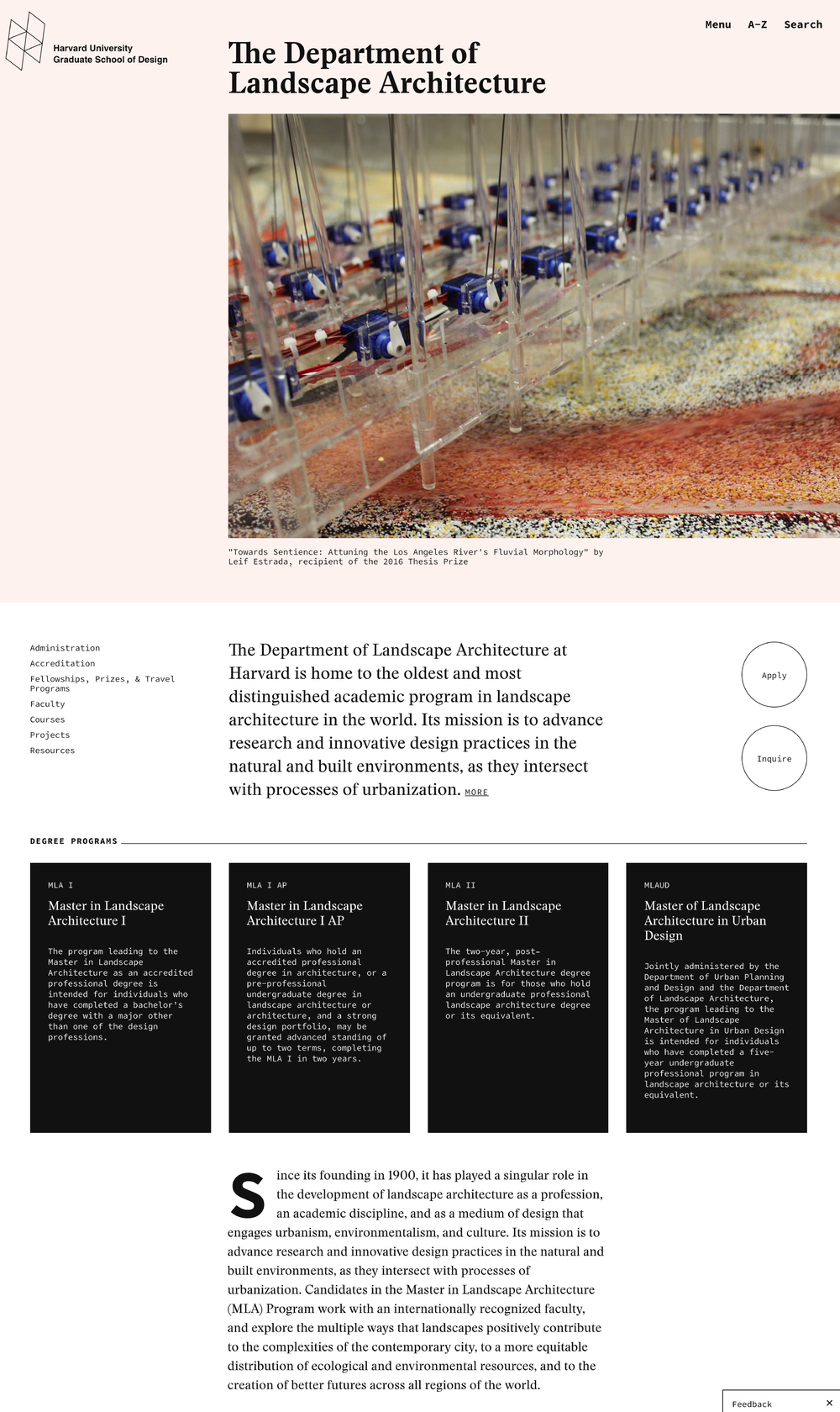TOWARDS SENTIENCE ™
Towards Sentience™, as featured on the Harvard GSD's school webpage
Towards Sentience™, as the main featured project on Harvard GSD's MLA Department webpage (2016-2017)
Exhibited during the 365th Commencement of Harvard University, via the Graduate School of Design
Towards Sentience™ has been honored to appear in a number of design publications and exhibitions. Below is a list where the thesis has appeared in, to date:
Upcoming Peer-Reviewed Paper, "Experiments: Manifesting the [In]visible Landscapes" in Cuarto Magazine, Volume 1: Disruption, Issue 3: Visible
"Experiments: Manifesting the [In]visible Landscapes" in Reading Beyond… edited by De Jonghe Bert, and Fatma Mhmood
“Towards Sentience” - Presented to California College of the Arts | Architectural Ecologies Lab
"Sentient Landscapes"- Presented to Cornell University's College of Agriculture and Life Sciences, Department of Landscape Architecture
"Towards Sentience" Chapter in Codify | Parametric and Computational Design in Landscape Architecture
Submitted proposed presentation with Christianna Bennett, "Experiments: Manifesting the the [In]visible Landscapes" at at Iowa State University's Symposium: Coding Design / Designing Code
Exhibited Project in "Responsive Topography - Fluvial Landscapes"
Exhibited by the Landscape Biennale at the Collegi d'Architectes de Catalunya
Featured project representing the Department of Landscape Architecture-Harvard GSD
Under the Advisement of Bradley Cantrell | Fall 2015 - Spring 2016
Los Angeles, CA
Independent Master's Thesis
Cite as: Estrada, Leif. (2016). Towards Sentience: Attuning the Los Angeles River's Fluvial Morphology. Cambridge, MA: Harvard University. Dissertation.
—
For a comprehensive narrative, please visit the thesis website: http://towardssentience.com
Through our advancement in technology to tame and modify all known Natures, we have facilitated the rejection of the once-proliferating dichotomous norm between ‘the manmade’ and ‘the pristine and idealized’ image of untouched Nature.
Such production brings upon an anxiety as to what was once “natural,” which can sometimes undermine the projective evolution of it.
Our ability to conceptualize and create hybrids of biotic and abiotic systems has also facilitated the evolution of novel ecologies (accidental by-products) as a result of indeterminate processes. Through design, we “tame” biologic systems to human will to find and extract any economic and practical capacities. However, despite levels of human control, there is always a moment in which a system will fail (or break).
Such systemic failures re-situate accidental by-products in the contemporary realm of “uncontrolled environments.”
Can responsive systems learn from the living landscapes? Can sentient machines mitigate foreseeable systemic failures and/or narrow the gap between design intentionality and accidental by-products produced by the nature of indeterminate processes?
This thesis incorporates the design of a robotic machine, which will learn from initial site conditions, but also from the modifications it will produce independently. The landscape machine will eventually become sentient, through learning from its environments, iteratively honing on specific processes: to erode (concrete), to re-direct (water/sediments), infiltrate (the subterranean and recharge the arid Angeleno landscape), and to predict the successive planting that would endure the projective new Nature of the river. Sentient-ly, it will attune the fluvial landscape—to a level of degree that man is incapable of processing in order to respond and modify the landscape in real-time. Projectively, sentient machines will be created to aide landscape architects and designers to address human’s incapability to negotiate complexities that occur in real-time, which necessitates immediate responses. Through this new imagined sensory, it will enable the emergence of new forms of landscape, which was not possible without the machine’s new dimensions of sentience.



